Back in the Loupe
While consumers might ask “Where does my natural diamond come from?”, very few ask “Where does my lab-grown diamond come from?”
Hello my lovely readers,
Welcome back! I’ve officially returned to the office (hello, Midtown Manhattan hustle and bustle!). After a magical leave with my newborn babe, it feels great to be back. While that new baby smell is pure heaven, providing 24/7 care is indeed a wild ride…by the end, I was dying to get out, embrace the ritual of getting ready for the day, and engage in adult conversations that weren't solely centered on babies or the baby. I had a fleeting worry that I might have forgotten how to do it all, but it turns out, it’s just like riding a bike, and this mama is thriving!
Part of embracing my return involves getting re-immersed in the intricacies of my industry. So, fresh off catching up from the recent Las Vegas shows, and feeling like I had a grasp of what was happening with colored gemstones and jewelry trends, I turned my attention to the diamond market. It’s been a minute since I’ve done a post dedicated solely to diamonds, and given the several requests I’ve received, it felt like the perfect time for an update.
Beyond the well-known challenges—natural diamond prices disrupted by lab-grown diamonds which are seemingly everywhere, the impending doom of tariffs, etc.—what was the real outlook? It was time to get back “in the loupe,” so to speak. To do that, I caught up with a friend, Mark Klein, Vice President of Julius Klein Diamonds. For those unfamiliar, Julius Klein is one of the oldest, most important multi-generational diamantaires in the business—a deeply established, globally connected firm renowned for its expertise in high-quality natural diamonds. So, with Mark’s help, we’re going to pull back the curtain together on the current landscape.
There’s a lot of great content here! To ensure you see everything, open this email in your browser or, even better, view it in the Substack app, which I highly recommend.
Why the “Ideal Cut” Is No Longer the Only Ideal
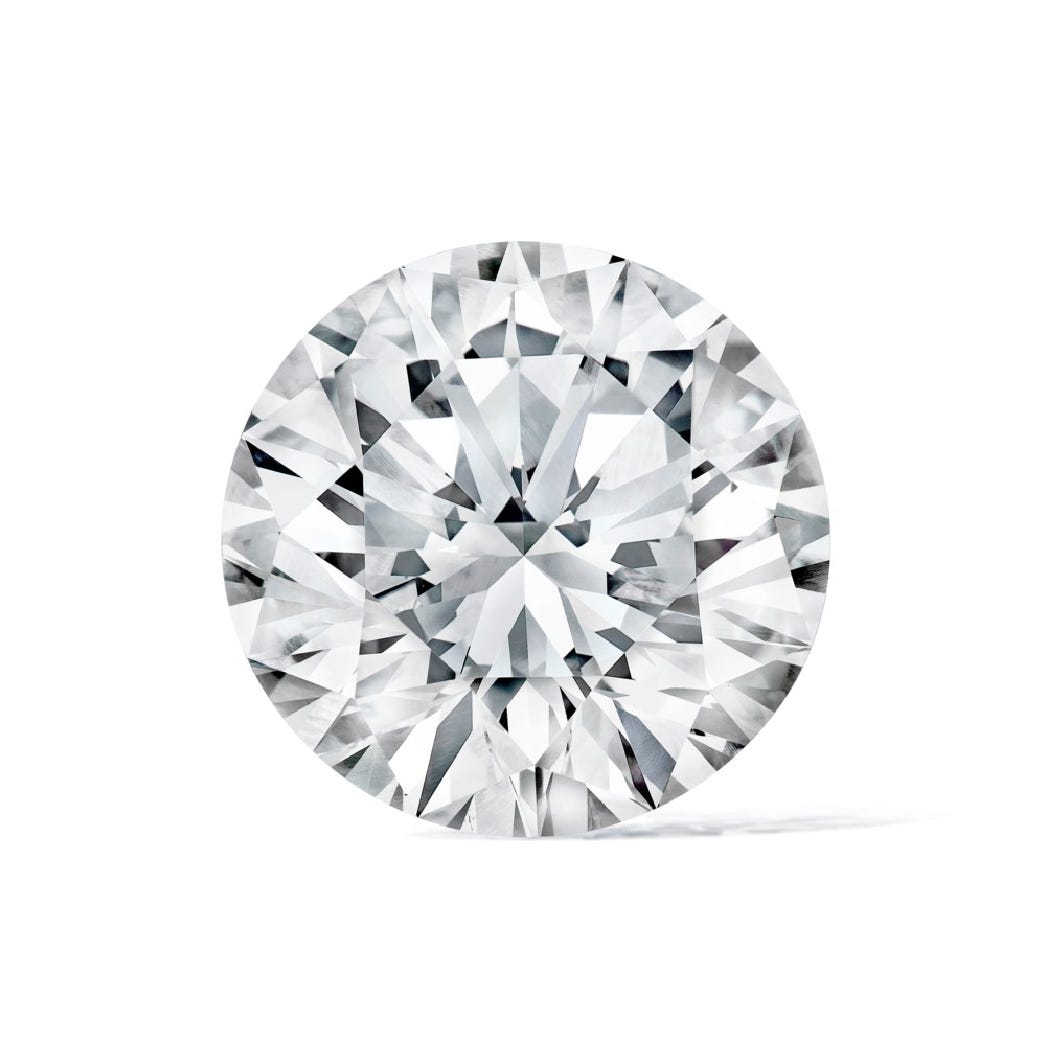
Beyond the omnipresence of lab-grown diamonds and the rising visibility of the secondary market, which are obvious trends, something else is becoming increasingly apparent: the allure of individuality is growing louder in the diamond world. The era of the “ideal cut” is waning, making way for a surge in demand for unique shapes and antique stones. We're observing a distinct shift away from what some would call “cookie-cutter,” mass-produced diamonds.
Historically, manufacturers would cut diamonds to specific calibrated parameters to optimize yield, simplify layouts for items like tennis bracelets and eternity bands, or simply for ease of production. This meant all emeralds, princess cuts, or cushions would look very similar. For example, in the early 2000s, everyone was mass-producing princess cuts, and the same happened with cushions later.
Now, the regular square, modern “crushed ice” cushion is actually over-saturated in the market. From a manufacturing perspective, a one-carat cushion can be more efficient than an 80 or 70-point round diamond from the same rough. It offers better yield and value.
The industry often emphasizes that every round diamond has to be “triple X1” or “ideal cut” based on various grading parameters. But why? People say it’s “better” because machines measure light return, brilliance, fire, or scintillation. While these machines have their pros, they’ve also led to a double-edged sword: rounds now look very similar.
Think about it: when I’m making a tennis bracelet, everything looks alike. Before a standardized cut grade for rounds was introduced (like GIA’s cut grade in 2004), you could take a parcel of round diamonds, and they'd all look very different. You’d see a one-carat stone that’s very flat, maybe 6.7-6.8 millimeters, and another that’s heavy with a higher depth, perhaps 6 millimeters. Matching stones for a bracelet then involved a lot of work, not just for color and clarity, but also for cut.
The pro of this standardization is uniformity for mass-produced items, especially since rounds still make up about 50% of the market. From a business and production standpoint, it makes sense. However, from a design, aesthetic, artistic, or creative perspective, nobody wants everything to look the same. Most mass-produced items, whether it’s food or clothing, aren’t as good as those crafted by true artisans who pay attention to every detail.
The pressure on mass-produced natural diamonds is also somewhat influenced by lab-grown alternatives. Let me be clear: I’m not taking a side here. I own natural diamonds, and having come from a background in buying and selling second-hand jewelry where only natural was considered acceptable, I’ve since opened my mind. My recent experiences—buying lab-grown jewelry and exploring all the fantastic fashion content on this platform—have truly been eye-opening. What I’ve seen is that when people opt for lab-grown stones to save on fashion jewelry, the focus often shifts to the piece’s overall design, rather than solely on the diamonds themselves. Makes sense.
When we talk about larger, more unique, and individual stones, like for an engagement ring or a pendant, people are looking for something special. That’s where the allure of older stones comes in. They carry the appeal that they were cut by eye, before machines dictated parameters. What one cutter considered beautiful was different from another. It’s like sculpting or painting – the artist visualizes something and creates it by hand. Now, cutters often have to check if a table is this percent or that percent. Who cares, in theory, if it looks beautiful?
While machines are good in many ways, like all technology, they can be a double-edged sword. They take away from the artistry of these cutters. It’s like telling a sculptor they can carve whatever they want from a piece of rock, but it can’t be taller than this, or wider than that. It limits their creative expression. As rough diamonds get larger, they become more unique in their shapes and forms. A cutter might see a specific rough and envision something unique that another cutter might not. Otherwise, they’re just cutting like robots.
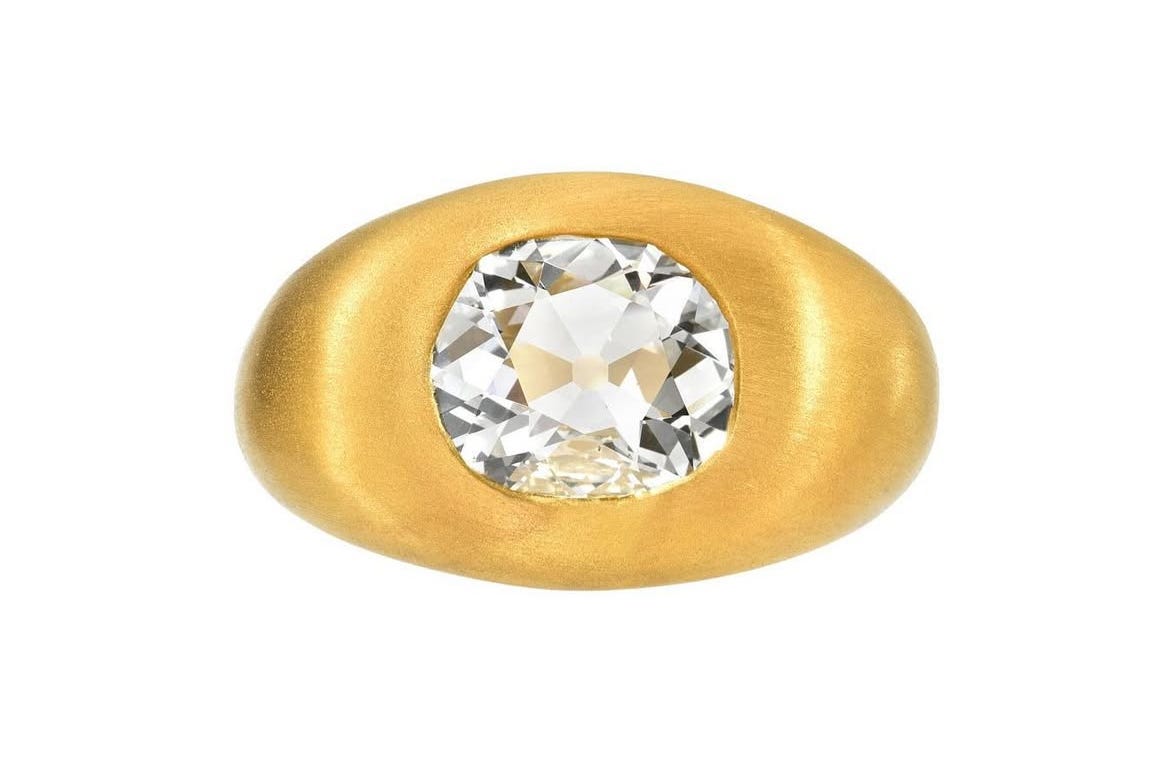
And this trend of individuality extends beyond diamonds. Think about hotels; the shift from chain hotels to more boutique experiences. The more we move into technology and AI, the more people seem to desire a return to individuality, a sense of self that isn’t conforming to a standard. While standardization has its pros, people are increasingly drawn to what resonates with them. They might like an antique or unique shape because it speaks to them, regardless of whether a lab deems it “excellent” or “ideal.”
It’s about connecting with something from an artistic perspective rather than conforming to a standard. This is reflected in fashion too; people are looking for fewer, high-quality, unique pieces rather than mass-produced items.
There’s a place and time for both mass production and unique pieces, just like there’s a place for lab-grown and natural diamonds. But the common denominator of what’s trending now is a significant rise in demand for truly one-of-a-kind pieces. These aren’t things you’ll see every day. When you wear them, you know you're the only one who has that specific piece.
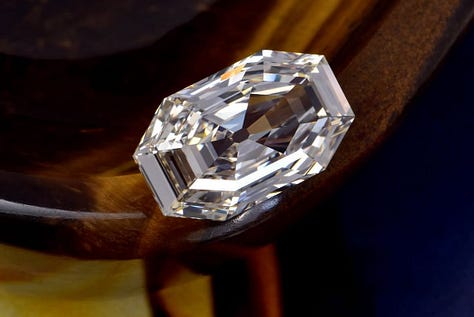
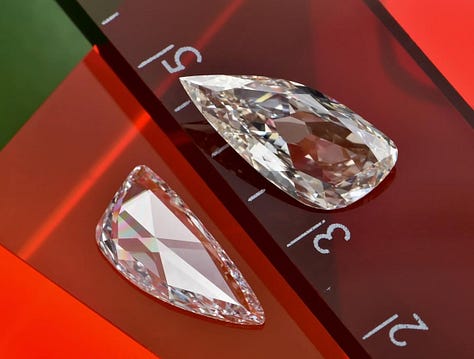
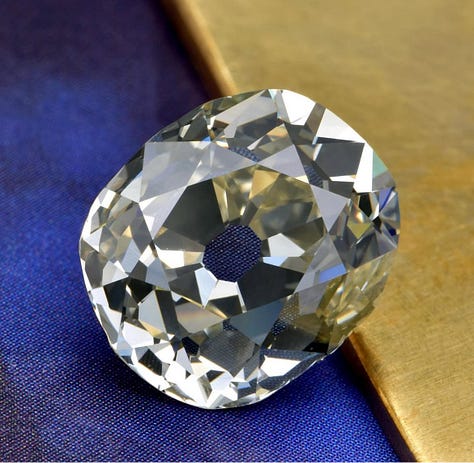
Are Natural Diamond Prices Falling? Not So Fast.
We’ve seen significant, well-documented changes and challenges in the natural diamond market in the last five years or so. While many believe lab-grown diamonds have disrupted all natural diamond prices, the truth is, it’s more nuanced. Commercial or everyday diamonds—think basic eternity bands, studs, or tennis bracelets without unique designs—have definitely taken a hit. Yet, going back to the quest for something unique or individual, for rarer and more distinctive natural diamonds, we’ve actually observed an increase in value.
Think about pearls. I’ve used this metaphor for a while now. When everyone started farming cultured pearls, it dramatically changed the market. Cultured pearls are real pearls – the same material – but it became easy to produce a strand of perfect pearls. When something isn’t hard to get and anyone can have it, it loses its specialness. It’s basic supply and demand.
The price of cultured pearls plummeted because of overproduction. Conversely, the price of natural pearls soared. Look at what natural pearls sell for at auction – it’s crazy! Fewer people were diving for them, perhaps the skill was being lost, as everyone shifted to less risky cultured pearl farming.
What makes diamonds, pearls, or gemstones rare and valuable is often the journey or effort involved in acquiring them. If you have to travel halfway around the world to get something, that’s part of its value. While globalization might make it seem easier today to source these gems from places like India—especially when compared to the expeditions required 20, 40, or even 100 years ago—the fundamental process of finding them hasn’t changed. For natural diamonds, you still need to find a mine, extract the rough stone, sort it, and then cut it. Yes, much of the cutting is now done by machines, but the initial, challenging journey remains. This entire process, though sped up by technology, is still incredibly complex. If we considered the sheer number of hands and eyes that touch a diamond before it reaches us, the consumer, we might even argue that these gems are cheap, not expensive, given all the intricate work that goes into them.
So, part of the pricing challenge from lab-grown diamonds is that the basic, commercial, standard items have taken a bigger hit. They don’t possess enough unique artistry or creativity to command a premium when a cheaper, mass-produced alternative is available. It’s like the difference between a hand-woven sweater and a machine-made one. Even if the material is the same, the craftsmanship and the way it’s made create a distinct difference in value and feel.
It’s hard for a seller to justify a significant price difference between an eternity band with natural rounds versus lab-grown rounds when both are round, triple-X, and look similar to the consumer’s eye. Two years ago, lab-grown diamonds might have been a quarter of the price of natural, but now they can be a tenth. How much more are consumers willing to pay for something authentic and real? I believe they're willing to pay more, but the question is, how much more? As lab-grown prices plummeted for basic goods, the price gap became so significant that natural diamond prices had to adjust downwards to remain competitive.
“Is It Real?”
A few years ago, I gave a presentation to my daughter's kindergarten class for the letter “D” for “diamond.” I brought different types of diamonds: glass, plastic, and finally, a real one, along with a jeweler's loupe. Every single kid, three or four years old, kept asking the same question: “Is it real?”
This struck me as a profound psychological question, not just about diamonds but about everything. While De Beers certainly popularized diamonds, people were buying them long before the company was founded 120-130 years ago. De Beers maybe made it more common practice; they took a trend and evolved it, aiming for every person to own one.
Some critics claim diamonds have no real value, but this perspective misses a key point: apart from life’s absolute necessities like food, oxygen, and shelter, all value is ultimately subjective—it’s what we, as individuals and a society, decide it is.
I believe people, as a whole, naturally appreciate and gravitate towards authenticity. We want to know that our mother truly loves us, our friend genuinely has our back, and that these real connections extend not just to people but also to the products we choose.
So even if a lab-grown diamond is chemically and physically identical, there's an unparalleled “realness” to a stone formed by mother nature—something you can hold that originated directly from the Earth.

Ultimately, I believe people will always be willing to pay more for something that’s real, authentic, and natural – whether it’s a diamond, a cultured pearl, or a piece of art. The crucial question is: how much more? And how much more special or unique is that authentic item? Because if it’s truly unique, people will pay even more. Brands, for instance, understand what customers are willing to pay a premium for, and they price accordingly. If the gap between a natural and lab-grown diamond is, say, ten times the price, it starts to seem excessive.
The “Green” Diamond Myth
A frequent question I get, especially from couples getting engaged or those just starting their jewelry collection, is about their choice of lab-grown diamonds. Aside from the considerable price difference, they’re often presented with a narrative that frames lab-grown diamonds as more ethical or sustainable. It’s important to clarify that this is a common misconception.
If you look at research, including studies funded by organizations like the Natural Diamond Council (who, yes, promote natural diamonds, but often rely on third-party research), and even independent reports like one Bloomberg did on electric cars years ago, you start to see a more nuanced picture.
For example, that Bloomberg report found you’d need to drive an electric car for 10 to 12 years just to offset the energy it took to produce it. Most people don’t keep their cars that long. So, while someone might buy a Tesla thinking they’re saving the environment, they might actually be using the same amount of energy, or more, in the short term. Then there’s the significant problem of battery disposal down the line – it’s becoming a huge environmental issue. I’m all for saving the environment, but sometimes our perceived actions don’t align with the actual impact.
The same applies to lab-grown diamonds. The vast majority – I’d say 75% to 80% – of lab-grown diamonds are produced in factories in Asia that consume a tremendous amount of energy, often from fossil fuels or coal. So, while consumers might ask “Where does my natural diamond come from?”, very few ask “Where does my lab-grown diamond come from?” The term “lab-grown” evokes an image of someone in a white coat in a clean, environmentally friendly lab.

The reality is, only a minority of companies are genuinely green, using solar power and other sustainable practices. They’re by far the exception, not the rule. It’s unfortunate because the majority of lab-grown producers are essentially piggybacking off the ethical claims of a few, when their own practices are often the complete opposite.
Our industry is far more regulated than almost any other. While no industry is perfect, the natural diamond sector has made immense strides over the past 5, 10, 20, even 30 years, to ensure environmental, social, and political responsibility. We’re often held to a much higher standard than industries like copper, platinum, or gold mining. It’s almost comical to me when people raise concerns about (natural) diamonds, but have no problem buying electronics without questioning how those components (like batteries and aluminum) are sourced.
The perception of “blood diamonds” largely stems from a single movie, yet it ignores the significant positive impact the diamond industry has had, including funding hospitals and infrastructure in mining communities. While there will always be a few bad apples in any industry, the narrative that natural diamonds are inherently “worse” is, in my opinion, a considerable oversimplification, if not a complete falsehood.
So with all that said, the advice is to research the source. For a natural diamond, nine out of ten will likely trace back to a well-regulated, law-abiding, and ethically sound source. Conversely, I believe the opposite holds true for lab-grown diamonds: nine out of ten will likely come from less environmentally friendly or transparent production methods. Do with that information what you will…
The Tariff Tightrope
Tariffs have been a hot topic, with a lot of back and forth. There have been many discussions among industry leaders, international organizations, and political entities trying to get diamonds on a “no tariff” list, given their unique status as a natural resource.
Nothing is finalized yet, but if the current 10% tariff remains in place, it will, of course, affect pricing. Businesses will have to adjust their strategies or find ways to absorb that 10% somewhere in the production pipeline. I could go into all my theories about economics and the diamond supply chain, but until it's finalized, it’s speculative.
Listen, anyone can absorb a few percentage points, right? But the issue is that 10% is a lot at the wholesale market level. Maybe it's not as significant at the retail level, but for us, moving goods easily through the market, it will be a bigger challenge.
So, before diamonds even reach a retail store, the industry faces a significant challenge. Many diamond dealers operate on very thin margins, meaning a 10% tariff could genuinely be a game-ender for some. This is a challenge that will undoubtedly reshape parts of the business.
At the consumer level, it’s generally thought that larger companies, with their higher markups, will likely absorb a portion of the tariff. Consumers might then bear the cost of the remaining few percent. This isn’t unique to diamonds; it’s similar to when we buy items in Europe and encounter different duties or taxes—a situation I’m all too familiar with! Ultimately, the tariff situation simply alters where and how people choose to buy their diamonds, not if.
Let’s wrap things up! It’s clear the diamond world is changing, with more and more people appreciating individuality and authenticity. While the market for standard diamonds faces challenges from mass-produced options, there’s a growing allure for what’s truly unique—think charmingly wonky antique cuts, unconventional shapes, or a stone with a distinct story. These unique gems continue to gain value because of their rarity and artistry.
I hope that this letter, and those I continue to publish, will leave you feeling more informed and inspired, with a clearer grasp of how value is truly subjective, along with the real-world complexities of ethical sourcing and market trends. The diamond story is far more intricate and compelling than it often seems, and I’ve really enjoyed sharing a deeper look into its multifaceted world with you. I can’t wait to share more soon!
xx Veronica
If you have any questions, comments, or just want to say hello, please send me a message. I’d love to hear from you!
Thank you so much for reading. If you enjoyed this post, a quick like always helps new readers discover this growing newsletter. I’m incredibly grateful for your support!
xx Veronica
If you are new here, please catch up on my previous posts—archived posts can be unlocked with a paid subscription (and if I do say so myself, there are loads of good reads there). If you'd like to show your support in another way or aren't ready to subscribe, you can always buy me a coffee!
Related Posts:
A "Triple Excellent" diamond, within the GIA's 4Cs system, refers to a round brilliant diamond that has earned the highest grade (Excellent) for cut, polish, and symmetry. This means the diamond is cut to maximize light performance, has excellent surface finish, and is precisely proportioned.








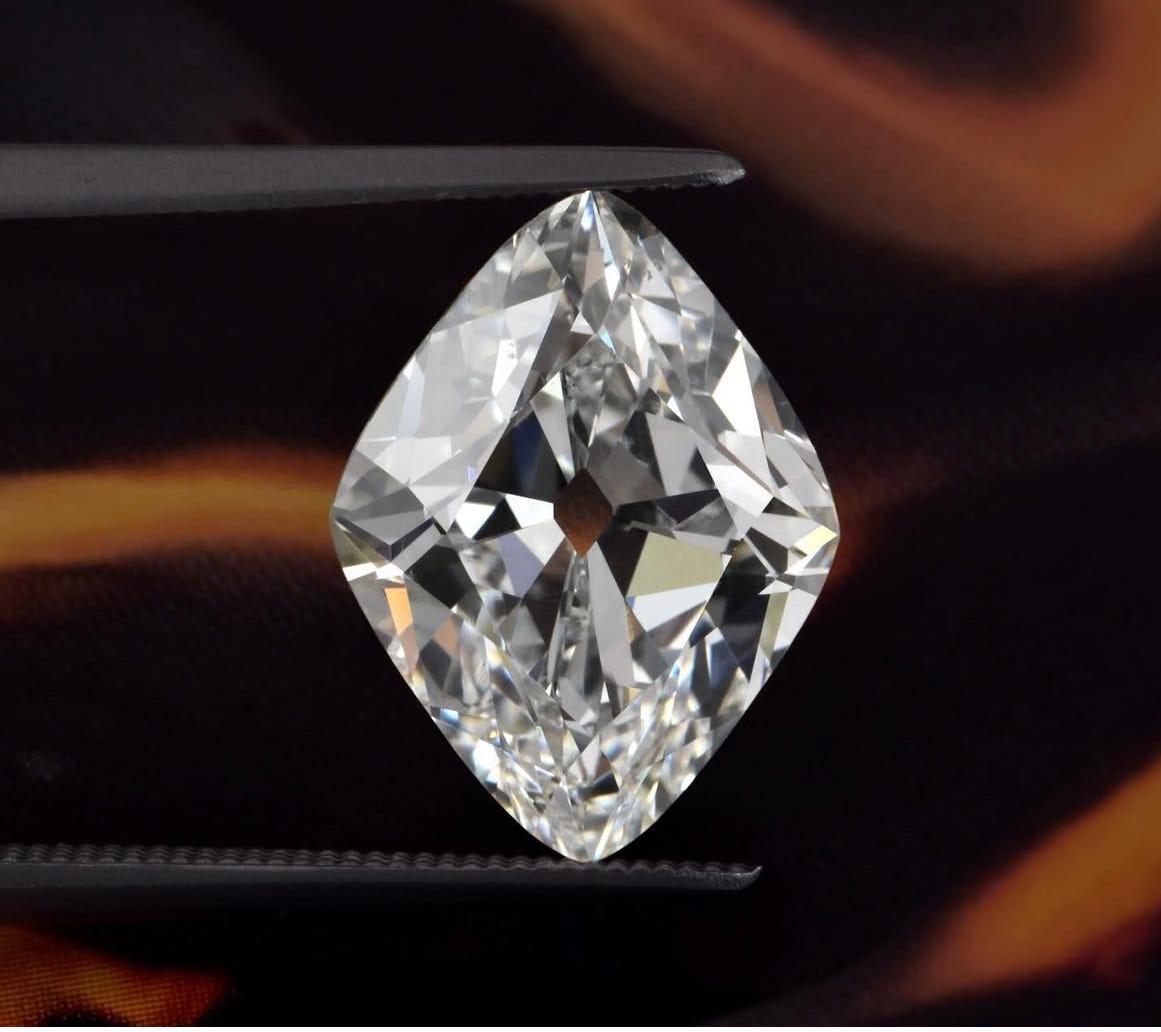


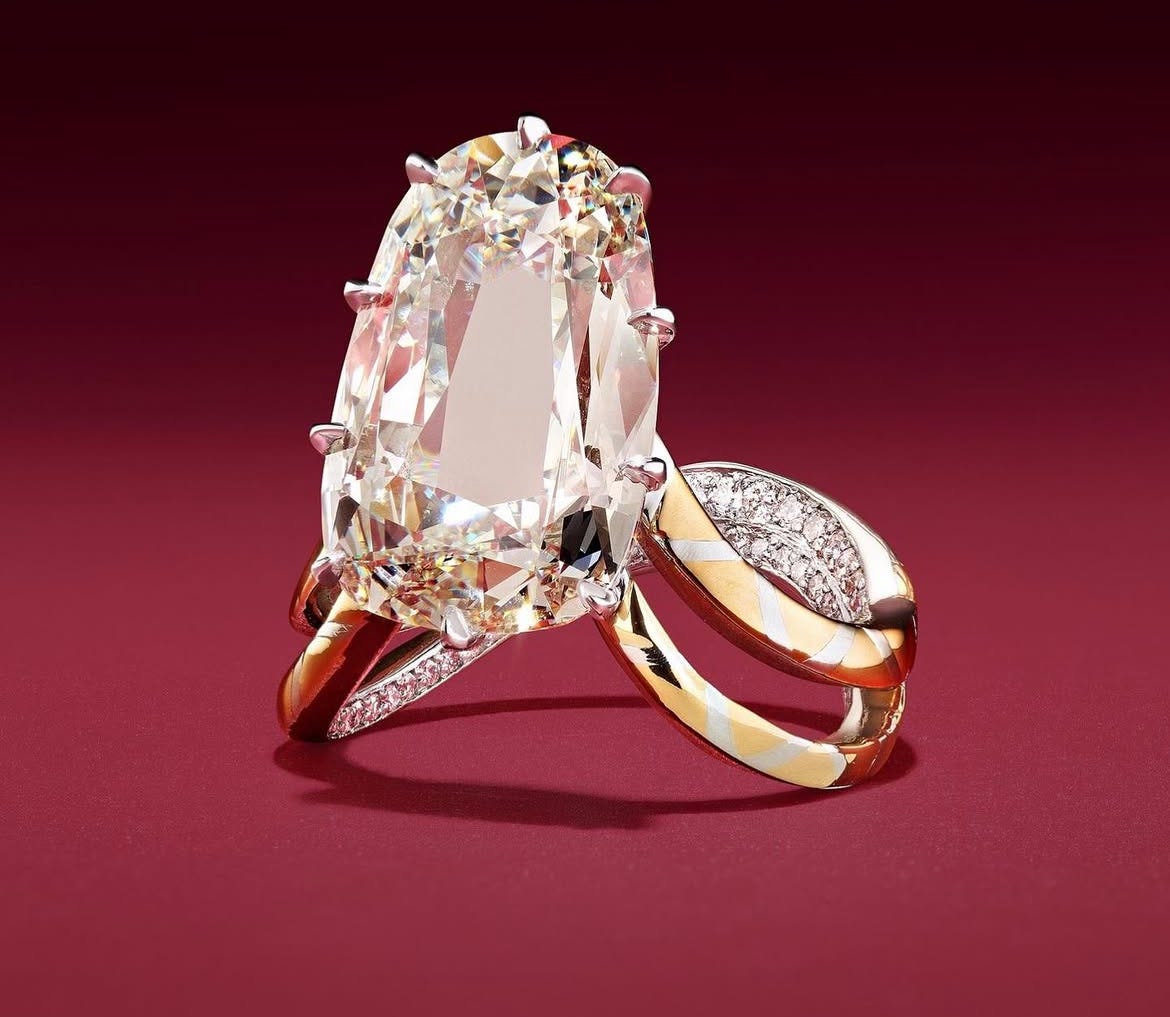



I’m soooo here for charming, wonky, real diamonds 😍 gorgeous article and glad to hear the transition from bébé to office is going well!!
Thank you, very informative even eye opening and inspiring 💎